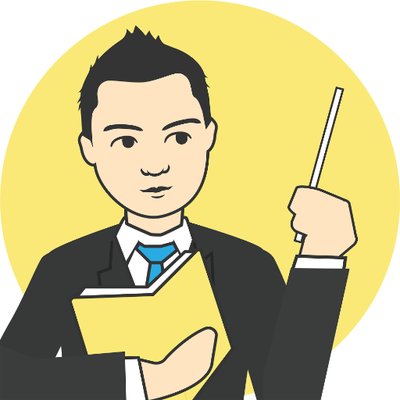In the social sciences, the terms “literate” and “literacy” occur in a variety of contexts. Most generally, a contrast is drawn between those preliterate or nonliterate (and therefore in one sense prehistoric societies that do not have a full-fledged system of writing for transcribing language and those that do. More frequently, the terms refer not to societies but to individuals, dividing a particular society into the literate and the illiterate based on the percentage of people who can read and write. Even among those who can read, competence obviously varies, making literacy a measurable quality, with some individuals being more literate than others.
In most societies with writing, until 100 years ago, only a minority could read and write; the rest were illiterate and hence depended on the oral or visual transmission of knowledge. They were not, however, dependent on knowledge originating in the oral or visual registers, and consequently, their traditions differed from those of a society without writing because they would be indirectly influenced by the written forms; illiterates would absorb Christian or Buddhist book learning through stories, sermons, paintings, and sculpture. They might also learn to conduct cognitive operations invented by the written culture, such as arithmetic tables learned by heart. The same is true of technological advances developed through the medium of written operations; illiterates may benefit from living in a literate culture, although the inability to read and write will place them at a disadvantage relative to those who can. Even cultures without writing may be influenced by contact with literate outsiders. The radio could stand as one example because literacy was clearly a prerequisite of its invention but not its operation. Today, however, there is probably no society in the world that does not have some literates capable of gaining access to written knowledge produced elsewhere.
The first achievement of writing is to ensure the storage and communication over time and space of linguistic messages. This is its prime role in transforming social organizations, but the process of setting down such messages, whether or not they are then communicated to anyone, leads to changes in human understanding itself. In terms of reading and writing mechanics, these involve developing secondary skills, coordinating the eye with the brain, the inner ear, and the silent voice, by which linguistic thoughts are expressed in visual formulae and vice versa. Learning to read involves the deliberate cultivation of exact memory and verbatim recall right from the start. Memorizing hundreds of basic shapes is crucial to any logographic writing, such as Chinese; syllabic scripts make fewer initial demands, and alphabetic ones fewer still.
The deliberate visual recording of language means not only a search for words but a search for genres. Oral discourse, even when not informal, often trails off into another activity, being punctuated by nonlinguistic activities. Written composition, however, must have a formal beginning and an end. Apart from the letter, there is a gamut of genres from the report to the passport, as well as literary genres ranging from the novel to the poem. These developments appear gradually over time, but eventually not only each composition but each subunit takes on a specific form; each topic requires a paragraph, each sentence a capital letter and full stop, each word its break. Syntax and punctuation become more precise and formal as a result of becoming visual. This is because, whereas speech operates as one of the channels in face-to-face communication, writing as a register stands on its own. It is “decontextualized,” or rather the context is highly restricted. Hence, clarity of expression and precision of genre, syntax, and punctuation are encouraged by the visual representation of language.
Not only is language decontextualized, but because of the permanency of writing, which materializes the flow of speech, words can be rearranged more freely in composition and also taken out of the sentence structure as individual items and grouped with others of the same “class.” Such an activity is not impossible in oral discourse, but its use is enormously developed in early literate cultures where the reading and copying of lists is one of the basic methods of instruction. Listing has other implications because it means placing items in unambiguous categories, giving each one a position, leading to consolidation on the one hand and reconsideration on the other. The list is a component of the table or matrix, an important instrument of intellectual operations. It is also intrinsic to recordkeeping of a multitude of kinds. The relative permanency of writing makes it valuable as a means of storing information, whether in the form of note taking, more deliberate recording, or the accidental survival of personal letters.
So much for writing. While reading aloud is necessarily an individual task and a frequent feature of early literacy, it involved an immediate audience, the physical presence of hearers. So, too, did a parallel feature of early literacy, the repetitive reading to oneself of a piece, then its subsequent recitation as if produced purely orally, to a collected audience. Such a process involves rereading, facilitating not only verbatim memorizing but also understanding and critical analysis, enabling the writer to construct and present more complex sentences. Such reviewing is the counterpart of comparing several versions of the same incident and evaluating their differences, a procedure that gave birth to history in the technical sense.
Literacy not only encourages deliberate perusal of the text, it also makes possible opposite highly selective forms of retrieval, such as consulting a dictionary or skipping and speed reading. The potential results of such procedures are vital to the growth of knowledge. Deliberate perusal of a text facilitates the search for inconsistencies, while the ability to set side by side different texts leads to the evaluation of criticism and skepticism. It allows not only for criticism of the texts but also for their further elaboration by commentary, which can in its turn be stored away for future reference, leading to the building up of libraries of stored knowledge. These libraries encapsulate objective knowledge in the sense that this information has become theoretically independent of specific human teachers.
The use of writing enables us to accumulate knowledge and at the same time to formalize, summarize, and generate it by means of paralinguistic devices, such as diagrams, lists, and tables. Such devices not only facilitate comprehension, their creation advances understanding by grouping material in new or question-raising ways. The telephone directory and the dictionary are important developments from simpler forms, powerful instruments of knowledge and communication. At the same time, the shopping list or railway timetable enables one to plan one’s future action, and the critical value of such tables for the allocation of time, for teaching, for work, in calendars, and in daily diaries needs no stressing. Once again, while planning is intrinsic to all human communities, such action can be greatly enhanced by the use of literacy.






コメントを残す